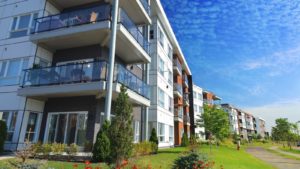Investigating the Effect of Ethernet Standards on Improving Internet Connectivity in Multi-Unit Units
Investigating the Effect of Ethernet Standards on Improving Internet Connectivity in Multi-Unit Units
Blog Article
Network standards serve a vital function in enhancing internet access, particularly in multi-dwelling buildings (MDUs) like flat buildings and condo complexes. These specifications define how information is transmitted over networks, ensuring that devices can interact efficiently. As an increasing number of people rely on the web for employment, education, and leisure, having a reliable and high-speed connection in MDUs has grown increasingly essential. By understanding Ethernet standards, building managers and residents can make informed choices about their web services, resulting to better access for everyone.
One of the key Ethernet specifications is IEEE 802.3, which outlines the specifications for wired Ethernet connections. This specification has developed over the years, introducing quicker rates and improved performance. For instance, the initial Ethernet standard offered speeds of 10 Mbps per sec, while more recent versions, such as Gigabit Ethernet, can provide speeds of up to 1,000 megabits per second. In MDUs, where numerous residents utilize the same web link, having a high-speed Ethernet network can significantly improve the total consumer experience. Faster rates mean quicker downloads, more seamless broadcasting, and more reliable visual conferences, which are crucial for remote work and online education.
Another significant feature of Ethernet standards is the implementation of structured cabling systems. These structures arrange and manage the network cables that link equipment within a structure. By following the guidelines set by Ethernet standards, MDUs can guarantee that their wiring is effective and effective. This organization helps reduce interference disruption and enhances information transmission quality. Additionally, structured wiring allows for simpler improvements and maintenance, allowing it simpler for building managers to adapt to changing tech requirements. As web utilization persists to grow, having a well-structured cabling infrastructure is vital for maintaining high-quality connectivity.
Electricity over Ethernet (PoE) is another important advancement in Ethernet tech that aids MDUs. PoE enables system wires to transmit power electricity along with information, eliminating the need for separate electric sources for equipment like safety cameras, Wi-Fi access points, and VoIP devices. This capability streamlines setup and minimizes clutter, allowing it easier to establish a comprehensive network in multi-dwelling units. By leveraging PoE, property administrators can improve safety and improve web connectivity throughout the building without the extra expense of additional electrical work.
In summary, Ethernet protocols have a profound impact on internet connectivity in multi-unit units. By providing quicker speeds, structured wiring, and advanced features like Power over Ethernet, these protocols help create a dependable and effective network for check this residents. As technology persists to progress, staying informed about Ethernet protocols will be essential for property administrators and residents alike. By investing in the appropriate infrastructure, MDUs can ensure that all tenants enjoy a seamless web experience, rendering their residences more linked and convenient.